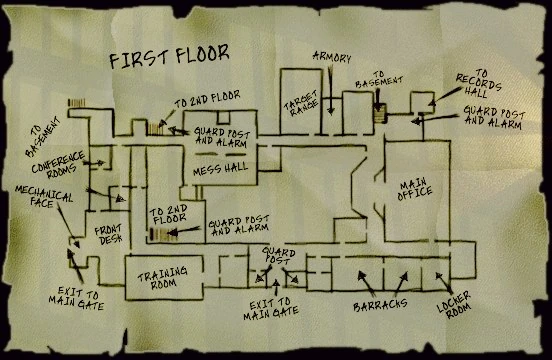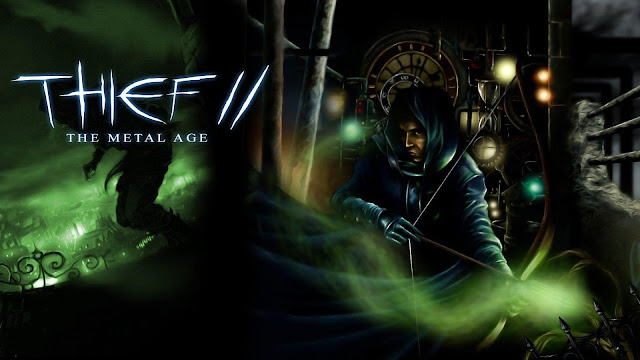Classic Levels: Thief 2 (2000), Framed
Garrett
Seven missions into Thief 2: The Metal Age as of the time of writing, and it is difficult to pick a highlight as so far every level has had some clever conceit that informs the play. This game is known to have been made as a set of level concepts first, and then had a story written around it unlike the narrative-first design of Thief: The Dark Project. It really shows as there is always some clever twist to the gameplay that challenges you to think about how best to do your infiltrating and looting.
The mission that made me really fall in love with the game is "Framed". Garrett needs to break into a guard station and frame his nemesis, the fanatical Sheriff Truart. The kicker is that the frame won't stick if he leaves a trail of bodies, so you can't kill or knock out more than five people (on the harder difficulty you can knock out even less people, and on the hardest difficulty none). This is ingenious as it really picks up the pace of play. In the first two levels I had been mostly doing my normal slow, stealthy thing knocking out everyone as I went, or maybe picking them off with a bow. This meant a pretty sedate playstyle, which is fun... but there was more fun to be had.
In "Framed" you have to only knock out the guards you really need not to be a factor any more, introducing an interesting element of prioritisation and a need to really think ahead about escape routes. Also, the nerves-jangling moments of flitting from shadow to shadow as guards walk up and down or grumble to one another in nearby lamplight are potent.
Compared to the first and second missions, a more complicated layout is introduced. Where you previously crept along a straight line into the mansion and could go upstairs if you felt like it, and then had a nearly-safe series of offices from which to plan hits on the warehouses, here you'll have a dense series of corridors and offices to navigate, many of which occupied or patrolled. The "metal face" Watcher security cameras appear as well, but careful exploration is rewarded with secret switches that open lifts between floors. These essentially function as a fast travel option when you've completed your tasks or for a swift way to beat the level.
On the podcast on the level by Inside At Last, a Thief podcast I came across while writing this, they spoke about the backtracking and lack of detail afforded the third floor. Apparently, the cancelled Thief 2 Gold - an Eidos/ LGS project that was abandoned when LGS went into bankruptcy - would have provided more content on the third floor, which as it is can feel a little bare-bones in comparison.
All in all the added complexity ups the challenge but does also reward you at every turn, and lends to the feeling of never being stuck as every time you push at a corner you haven't explored yet you'll find something else to do.
Although the levels came before the story, this one being early does make for a very nice character beat. Once in the station, the first place to hit up is the Sheriff's office. In what feels like an early ripple of the kind of environmental storytelling that the amazing Gone Home would be recognised for, you poke round the office and go through Truart's bin learning what kind of man he is. This is a very cool way to get to know about a key adversary in a game, going through their stuff without them knowing. It is also why games about infiltration and looting work so well in the 0451 genre, as after sneaking in you want to be able to interact with the environment in a rewarding way.
Following this level I've "relaxed" where guards are concerned, no longer feeling the need to take each and every one out of commission as I go. This has made the missions faster-paced, more fun and more satisfying. It is always more empowering to have lurked unseen until the second a guard looked away and then stolen something off the table behind them and melted back into the shadows with them none the wiser. "Framed" suggested a way to play the game. A great example of storytelling, environment and encounter design and gameplay tutorialisation. Trying this level with no knock-outs allowed is a tempting reason to try the highest difficulty setting on a future playthrough.




Comments
Post a Comment